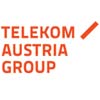
An overview of digital market trends
Although Europeans have access to basic digital networks and services, they are far from reaping the current and expected benefits of the digital revolution due to the shortcomings of the EU's telecoms and digital markets. This is reflected in the annual Digital Agenda Scoreboard published by the Commission today. The Commission will present a proposal for concrete measures later this year in response to the European Council's call for a single telecommunications market to address the problems outlined in today's report.
This is reflected in the annual Digital Agenda Scoreboard published by the Commission today. The Commission will present a proposal for concrete measures later this year in response to the European Council's call for a single telecommunications market to address the problems outlined in today's report.
Internet achievements:
Basic broadband internet access is now universally available across Europe - satellite coverage has increased, with 4,5% of the population without wired broadband internet access being able to access the internet via satellite. The Commission now considers it important to make the widest possible use of satellite internet where it can fill the remaining gap.
Half of the population has high-speed broadband internet - 54% of EU citizens have a broadband internet connection with a speed of more than 30 megabits per second.
Internet access is becoming increasingly mobile - 36% of EU citizens have access to the internet on a laptop or other mobile device (the share of mobile internet access increased from 2008% to 2012% between 7 and 27. data transmission (LTE standard) coverage tripled in one year to 26%.
Problem areas:
Only 2% of households have super-fast (faster than 100 megabits per second) broadband internet connections, well below the EU target of 2020% by 50.
50% of EU citizens have little or no computer skills - neither the level of ICT skills nor the number of users familiar with computer technology has increased in recent years. 40% of companies that employ or want to employ IT experts have difficulty finding a suitably qualified professional, while the number of ICT-filled posts that can be filled by 2015 is projected to increase to 900. At the forefront of the recently launched Grand Coalition for Digital Jobs will include measures to address this asymmetry.
Other findings:
More and more people have used the Internet at least once - continuing the trend of previous years, the proportion of EU citizens who have never used the Internet has fallen again (by 2 percentage points to 22%). However, some 100 million EU citizens have never used the internet, citing costs and a lack of interest or knowledge as the main obstacles.
70% of the population use the internet regularly, at least once a week - the same proportion in the previous year was 67%. 54% of disadvantaged people use the internet regularly, compared to 51% in the previous year.
Roaming charges decreased in 2012 - by almost 5 eurocents, mainly as a result of the regulation of 2012 July 1 on roaming services.
E-commerce is constantly expanding, but only within individual countries, the number of cross-border transactions is small - 45% of the population use the internet to buy goods and services, a modest increase from 43% in the previous year. Very few buy from abroad.
The majority of companies and citizens already use some form of e-government service - 87% of businesses and 44% of individuals conduct their business online (an increase over the previous year for both companies and individuals 3 percentage points).
Expenditure on research has increased somewhat despite budget cuts. Public investment in ICT R&D increased by 1,8% (€ 122 million) to € 6,9 billion; the volume of private investment in R&D also increased, but this 2,7% increase was not enough to offset the decline recorded in the previous year.














